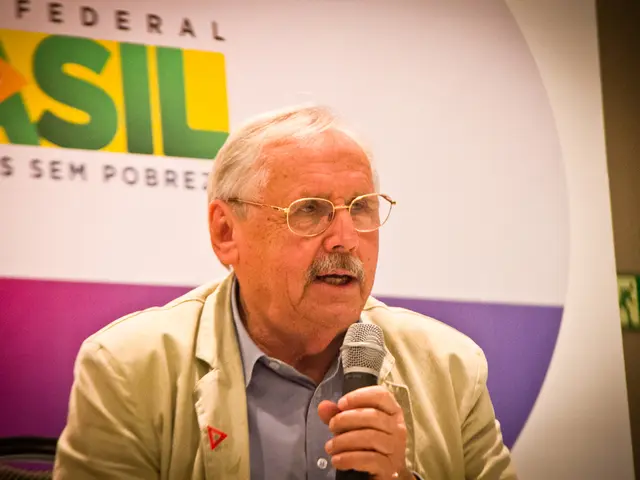Uncovering a novel approach in cancer detection: Diamonds reveal the presence of tumors without radiation exposure
University of Warwick's Diamond Sensor Aids Safer Tumor Detection
The University of Warwick has developed a revolutionary sensor for tumor detection, leveraging the unique properties of diamonds to make surgeries safer and more precise. This innovative device, based on the sensitivity of nitrogen vacancy centers in diamonds, detects magnetic tracer fluids injected into the body, mimicking the migration path of cancer cells, particularly to lymph nodes [1][3][5].
The sensor's high sensitivity stems from the nitrogen vacancy centers in the diamond, making it an extremely accurate magnetometer. These defects in the diamond structure allow it to respond to minute changes in magnetic fields caused by iron oxide nanoparticle tracers [3][5]. By pinpointing where the tracer accumulates, surgeons can accurately locate tumors and affected lymph nodes without using radioactive substances, making surgeries safer and less invasive [1][3][5].
Key aspects enabling safer tumor search include:
- Non-radioactive and non-toxic: Unlike traditional methods relying on radioactive tracers or dyes, the diamond sensor avoids radiation exposure and allergic risks [1][3][5].
- Ultra-sensitive and small: The sensor head is only 10 millimeters, fitting into keyhole or endoscopic surgery tools, allowing real-time, precise tumor and metastasis detection during minimally invasive procedures [1][3][5].
- Detects very low tracer doses: It can identify one hundredth of the typical clinical dose of magnetic tracer fluid, enhancing safety by reducing the amount of tracer needed [3][5].
Nanodiamonds, which are tiny particles a few nanometers in size, are gaining attention in medicine due to their ability to couple drugs specifically to cancer cells and fluoresce [4]. This property makes them ideal tools for imaging. The sensor's response to a hundredth of the usual dose of magnetic marking fluid further underscores its potential for precise and safe tumor detection [3][5].
Breast cancer surgeon Stuart Robertson is collaborating with the University of Warwick to optimize magnetic technology for tumor detection. The combination of nanodiamonds' ability to fluoresce and their use for drug transport results in new concepts known as theranostics, which involve diagnosis and therapy in a single procedure [2]. This could potentially make tumors visible and deliver the appropriate treatment, potentially reducing side effects.
The technology for tumor detection using diamonds is being tested in clinical settings at the University Hospitals Coventry and Warwickshire NHS Trust [1]. If successful, this breakthrough could provide a compact, safe, and practical alternative to conventional radiation-based tumor detection methods, helping surgeons to remove affected tissues while preserving healthy ones and reducing risks associated with radiation [1][3][5].
[1] University of Warwick. (2021, September 23). New sensor could help doctors find tumours without radiation. ScienceDaily. Retrieved October 12, 2021 from www.sciencedaily.com/releases/2021/09/210923182608.htm
[2] University of Warwick. (2021, September 23). New sensor could help doctors find tumours without radiation. Phys.org. Retrieved October 12, 2021 from www.physorg.com/news/2021-09-sensor-doctors-tumours-radiation.html
[3] University of Warwick. (2021, September 23). New sensor could help doctors find tumours without radiation. EurekAlert!. Retrieved October 12, 2021 from www.eurekalert.org/pub_releases/2021-09/uow-nsf092321.php
[4] University of Warwick. (2021, September 23). New sensor could help doctors find tumours without radiation. Medical Xpress. Retrieved October 12, 2021 from www.medicalxpress.com/news/2021-09-sensor-doctors-tumours-radiation.html
[5] University of Warwick. (2021, September 23). New sensor could help doctors find tumours without radiation. News-Medical.net. Retrieved October 12, 2021 from www.news-medical.net/news/20210923/New-sensor-could-help-doctors-find-tumours-without-radiation.aspx
Read also:
- Connection Between ADHD and Trauma?
- West Nile Virus detected in Kentucky for the first time; authorities advise locals to adopt safety measures
- Digestive issues: Understanding causes, remedies, and further details about acid reflux and excessive burping
- Exploring Botox as a Treatment for Interstitial Cystitis: Insights, Adverse Effects, and Further Details







